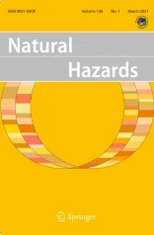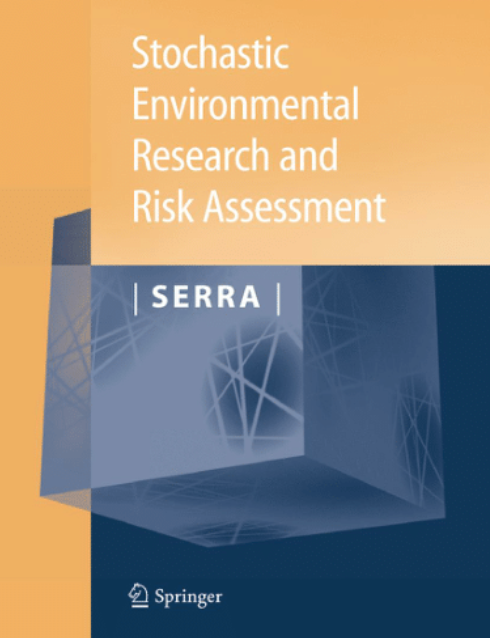publications
Some publications related to my work and some other favorite papers.
2024
-
 Characterization of historical megathrust earthquake ruptures in Central Chile using logic tree analysisJaviera San Martín, Ignacia Calisto, Jorge Quezada, and 4 more authorsNatural Hazards, Apr 2024
Characterization of historical megathrust earthquake ruptures in Central Chile using logic tree analysisJaviera San Martín, Ignacia Calisto, Jorge Quezada, and 4 more authorsNatural Hazards, Apr 2024Characterizing the spatial distribution of ruptures from historical and recent earthquakes is key to understanding the seismic cycle of large earthquakes in subduction zones, and thus to assessing the potential risks associated with future earthquakes. Central Chile (35}}^{\backslashcirc }}}S–38}}^{\backslashcirc }}}S) has been repeatedly affected by large earthquakes, such as the 2010 Maule (Mw 8.8) and the 1835 earthquakes witnessed by Robert Fitzroy (HMS Beagle captain). Here, we identify the rupture pattern and tsunami propagation of the 1751, 1835, and 2010 mega-earthquakes, events that overlapped in central Chile, by compiling historical records and applying robust statistical tools. We used an adaptation of a logic tree methodology to generate random sources of slip distribution for each event, constrained by tsunami and vertical deformation data. We find that the three events studied have different slip peaks. The 1751 earthquake has the largest slip with a maximum patch of }}\backslashsim}}26 m, while the 2010 and 1835 earthquakes reach slips of }}\backslashsim}}16 m and }}\backslashsim}}10 m, respectively. Our results show that a part of the margin between 36}}^{\backslashcirc }}}S and 37}}^{\backslashcirc }}}S was consistently affected by large earthquakes, but with different slip and depth. The shallower depths of the megathrust north of 36}}^{\backslashcirc }}}S accumulated energy for at least 300 years, which was released by the 2010 earthquake. Our results provide important constraint for rupture patterns and spatial relationships between historical and recent earthquakes, thus extending the time scale for seismic slip distribution analyses over multiple cycles and contributing to a more comprehensive understanding of seismic hazards.
2023
-
 A stochastic approach to the characterization of the seismic sources: a potential method for the assessment of sources of historical and paleo tsunamiRodrigo Cifuentes-Lobos, Ignacia Calisto, Breanyn MacInnes, and 5 more authorsStochastic Environmental Research and Risk Assessment, Jul 2023
A stochastic approach to the characterization of the seismic sources: a potential method for the assessment of sources of historical and paleo tsunamiRodrigo Cifuentes-Lobos, Ignacia Calisto, Breanyn MacInnes, and 5 more authorsStochastic Environmental Research and Risk Assessment, Jul 2023Inundation, wave arrival and deformation data gathered from measurement campaigns and historical accounts have been used to study past earthquakes and tsunamis, being crucial for magnitude and extension estimations. Nevertheless, the most commonly used methods cannot provide more information about the spatial characteristics of the event’s slip distribution. In this work, we aim to create a methodology for obtaining more realistic, heterogeneous estimations of the slip distribution characteristics of past tsunamigenic earthquakes, by obtaining slip patterns of each earthquake of the same seismic segment, thus establishing a history of the seismic cycle in a rupture zone. To obtain the stochastic characterization of the slip distribution of the seismic source, we combine fault defining parameters using a logic tree structure to generate random slip distributions which are subsequently submitted to successive restrictions to assess their compliance with the available deformation and tsunami data, discarding those that do not satisfy the constraints and using those that do to estimate the most probable seismic source in terms of the data. We test this methodology with synthetic heterogeneous slip fields off the coast of South Central Chile to assess its limitations, data dependence, resolution capabilities and uncertainties. Obtaining a good correlation between the synthetic observations and the locations of the main slip features. Finally, the 9.5 Mw, 1960 Valdivia earthquake is used to benchmark the methodology with real deformation and tsunami data from surveys and historical accounts. This result is then compared to slip distributions obtained with tsunami, seismological and deformation data inversions. This shows that the magnitude of the earthquake could be recovered correctly and the slip distribution is very similar to models calculated from different techniques.